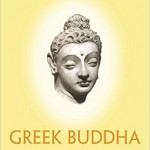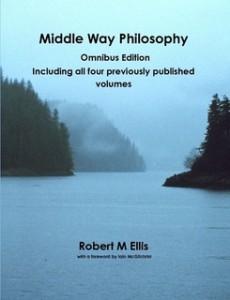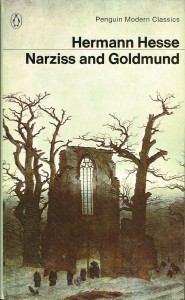A new review is now up on this page of an extraordinary new book that turns Buddhism on its head using rigorous historical scholarship. Beckwith argues that the Buddha taught the Middle Way, not the other elements that have become associated with Buddhism such as the 4 Noble Truths, karma or nirvana. He argues that the Pali Canon is not a reliable source on early Buddhism, but bases his account on a variety of other sources: Greek, Chinese and Persian texts and Indian rock edicts. Though the Middle Way does not depend for its helpfulness on any historical source, this book will nevertheless be of much interest to anyone who is approaching the Middle Way via Buddhism.
Beckwith argues that the Buddha taught the Middle Way, not the other elements that have become associated with Buddhism such as the 4 Noble Truths, karma or nirvana. He argues that the Pali Canon is not a reliable source on early Buddhism, but bases his account on a variety of other sources: Greek, Chinese and Persian texts and Indian rock edicts. Though the Middle Way does not depend for its helpfulness on any historical source, this book will nevertheless be of much interest to anyone who is approaching the Middle Way via Buddhism.
All posts by Robert M Ellis
‘Middle Way Philosophy’ Omnibus Edition E book now available
The e-book of the Omnibus Edition of my ‘Middle Way Philosophy’ series is now available. This includes the full texts of all four volumes of ‘Middle Way Philosophy’ (see the pages for each on books/ Middle Way Philosophy books on the menu above). At £7.50, this ebook is by far the most economical way to access this text, which offers a detailed working-out of this whole approach to philosophy, psychology, desire, meaning, belief, ethics, politics and practice. To purchase a copy please follow this link. In time it will also become available from Apple, Amazon, Kobo etc. As previously posted, it’s also available as a paperback.
is now available. This includes the full texts of all four volumes of ‘Middle Way Philosophy’ (see the pages for each on books/ Middle Way Philosophy books on the menu above). At £7.50, this ebook is by far the most economical way to access this text, which offers a detailed working-out of this whole approach to philosophy, psychology, desire, meaning, belief, ethics, politics and practice. To purchase a copy please follow this link. In time it will also become available from Apple, Amazon, Kobo etc. As previously posted, it’s also available as a paperback.
Reflections on ‘Narziss and Goldmund’ by Hermann Hesse
‘Narziss and Goldmund’ is a moving, symbolic novel of friendship between a cerebral teacher who becomes a monk (Narziss) and a restless, wandering artist (Goldmund), which in many ways strongly illustrates a process of integration and the Middle Way. Beginning in a cloister when Goldmund is a boy being taught by Narziss, the story unfolds in a medieval context of plague and political instability in an unnamed area of the Holy Roman Empire. But the story is not so much historical romance as fable, and gains greater universality from the relative vagueness of the medieval context. The psychological acuteness of the fable (published in 1959) must owe much to the psychotherapeutic tradition, particularly the world-view of Jung.
Narziss is a classic left-brain dominant intellectual, a classical scholar familiar with theology and philosophy. However, his abilities in understanding people also seem to have a strong intuitive element, and lead him into positions of teaching and leadership. Goldmund, however, has much stronger right-brain abilities: particularly a capacity to recall images vividly and in great detail. He has physical poise, confidence and resourcefulness, a strong sex drive with accompanying relationship to the archetypal feminine, and an acute sensitivity to suffering. With these strengths come countervailing weaknesses: Narziss, shaped by the monastic environment, lacks the immediate access to love that Goldmund experiences, even though he was himself able to help Goldmund access that capacity for love, through repressed memories of his mother, early in the story. Goldmund, on the other hand, is prone to restlessness and inconsistency: in some ways he is a Romantic figure, drifting around the countryside as a homeless vagrant in pursuit of an elusive fulfilment in freedom from bourgeois commitments.
Just as important as the contrasts between the two friends, however, are the similarities. Both have an openness in their response to experience, and a pragmatic avoidance of dogma in the response to religion. Both (though perhaps in inconsistent ways) ‘believe in’ God, but recognise the imperfection and suffering of the world in a way that helps them avoid any unhelpful expectations of God. Prayer in the context of the cloister is definitely a spiritual practice rather than a demand for revelation or intercession. Both friends also go through an integration process of learning from their experiences – in this respect participating in the great German tradition of the Bildungsroman (novel of education or personal development). Both find creative ways to channel their differing energies in a harsh environment.
The main focus of the novel is on the struggles of Goldmund after he leaves the cloister and thus finishes his formal education, by taking off abruptly into vagrancy. Along the way he seduces a great variety of women, in search not only of pleasure but the fulfilment of his mother archetype. However, whenever he starts to be in a position of settling down, he is either overtaken by restlessness or sabotages his position, by taking great risks in his seduction of forbidden maids or wives.
Goldmund only realises his talent and vocation relatively late – as a wood carver. One day, he is transfixed by a statue of the Virgin Mary, and then seeks out the carver of that statue, Master Nicholas, in order to beg training or apprenticeship from him. Nicholas is impressed enough by Goldmund’s artistic abilities to support him, but once Goldmund has honed his abilities for a couple of years and produced a superb carving of Narziss (as John the Baptist), his former restlessness and suspicion of bourgeois settlement overcome him again. Despite the honours offered by Master Nicholas, including his daughter’s hand in marriage, Goldmund has to throw up everything he has achieved in the settled life.
After another period of wandering, this time in a country devastated by plague, Goldmund returns to the city where Master Nicholas works. However, this time he encounters Narziss, who has been elevated to abbot of the monastery in which Goldmund was originally educated, but manages to save Goldmund from capital punishment after he has been caught fleeing from a rendezvous with the mistress of the ruler of the city. Having deep insights into Goldmund’s abilities and worth despite the vagrant and even criminal path he has sometimes taken, Narziss takes Goldmund back to the monastery and sets him up again with a workshop, where he once more starts to produce outstanding carvings. Now, too, Goldmund begins to recognise the limitations created by the indiscipline of his life, and begins to learn and appreciate religious practice. But once again, after a while, he becomes restless and goes wandering one more time – this time for the last time.
This novel reflects important aspects of the Middle Way in several respects. Although set in medieval Germany and taking a Christian context for granted, it shows how that context can be used for integrative growth drawing on its spiritual and artistic traditions. This illustrates the potential dynamism that was still present in European societies during the Middle Ages, despite what may now seem to us as deeply dogmatic assumptions and crudity of belief. More importantly, though, the novel shows the growth of two related individuals through a friendship in which each recognises strengths in the other that they themselves lack. Rather than merely defending the interpretation of experience that each may have arrived at by temperament, each draws on the others’ experience and insight, learning with great difficulty how conditions extend beyond the world each most easily believed in. Each avoids either absolutising the beliefs he has arrived at, or on the other hand failing to place confidence in the experience that has helped him reach the approach to life he has developed.
We all may identify a Narziss and a Goldmund within us, because we all have a left brain and a right brain. Though more like Narziss myself, I could also identify with Goldmund’s Romantic restlessness. In the end, unfortunately, the integrative progress that Goldmund makes did not seem to be sufficient, and there is another strength of the book. Despite showing the process of integration for both characters, it avoids easy resolutions on the strength of that integration. Instead it leaves us with a sense of the possibility of progress, yes, but only one tapering into uncertainty. To apply my accustomed language about the different types of integration, Goldmund’s integration remains temporary and asymmetrical because he integrates meaning without really integrating his beliefs (and thus is unable to entirely curb his self-destructive tendencies). Narziss’s integration is more stable because it is so much based on integration of belief, but the philosopher’s tendency to assume certain meanings as the basis of reasoning rather than explore new ones also creates an asymmetry in his integration.
Perhaps the Jungian kind of psychological acuity in Hermann Hesse’s work may now seem a bit dated for some, but to me it seems well worth rediscovering. The integration (and conflict) of the individual is a theme that German literature has particularly pursued, through figures such as Goethe, Mann and Hesse. In English literature that same theme was taken up by George Eliot, who was much inspired by Goethe. If one is looking for a stream of artistic achievement with a particularly strong relationship to the Middle Way, this seems like one well worth following as a source of inspiration.
Announcing our Spring Weekend Retreat 2016
Our first retreat of 2016 will be an informal weekend event, without a set theme but with our usual mixture of activities – meditation, arts and discussion. It will take place at Chatcull in rural Staffordshire, in the north-west midlands of England from 11th-13th March. See this page for details and to book your place.
weekend event, without a set theme but with our usual mixture of activities – meditation, arts and discussion. It will take place at Chatcull in rural Staffordshire, in the north-west midlands of England from 11th-13th March. See this page for details and to book your place.
Middle Way Philosophy Omnibus Edition now available
The omnibus edition of this series is now available! This includes all four previously published volumes (total cost £60.50). This, admittedly rather substantial, volume offers all the same content for £28.50 in paperback, with consolidated glossaries, bibliography etc. If you have read ‘Migglism’ or ‘Truth on the Edge’ and want to move onto the detail, then this is what you need, even if you don’t read it all at once or in the conventional order! It’s also the place to start for academic types who want the detailed argument straight away.
This includes all four previously published volumes (total cost £60.50). This, admittedly rather substantial, volume offers all the same content for £28.50 in paperback, with consolidated glossaries, bibliography etc. If you have read ‘Migglism’ or ‘Truth on the Edge’ and want to move onto the detail, then this is what you need, even if you don’t read it all at once or in the conventional order! It’s also the place to start for academic types who want the detailed argument straight away.
There will also be an ebook, just as soon as I’ve managed to resolve the technical issues that inevitably seem to accompany publishing an ebook.
The version of the first volume included is the recently-published second edition, with foreword by Iain McGilchrist. Iain writes as follows:
The “Middle Way” Ellis argues for so cogently is far from being a simple compromise between existing polarities, but a departure at right angles to typical thinking in the modern Western world, which looks to me like the path to ancient wisdom.
The perception that objectivity is neither an absolute, nor any the less real for that, is central. Ellis argues for an approach that is incremental and continuously responsive to what is given, rather than abstract and absolute. This is the difference, as he notes, between the pragmatic, provisional, nuanced, never fixed position of the right hemisphere in the face of the absolutism towards which the left hemisphere always tends.
The need for certainty must inevitably lead to illusion, whether in philosophy or in the business of living, and here too Ellis makes clear – as far as I am aware for the first time – the connections between the cognitive distortions known to psychology and the fallacies identified in the process of philosophy.
This is an important, original work, that should get the widest possible hearing.

